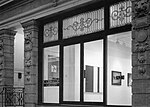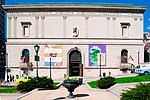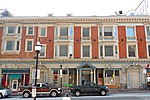First Unitarian Church (Baltimore, Maryland)

The First Unitarian Church is a historic church and congregation at 12 West Franklin Street in Mount Vernon, Baltimore, Maryland. Dedicated in 1818, it was the first building erected for Unitarians in the United States. The church is a domed cube with a stucco exterior. The church, originally called the "First Independent Church of Baltimore", is the oldest building continuously used by a Unitarian congregation. The name was changed in 1935 to "The First Unitarian Church of Baltimore (Unitarian and Univeralist)" following the merger with the former Second Universalist Church at East Lanvale Street and Guilford Avenue in midtown Baltimore. The American Unitarian Association (founded 1825) and the Universalist Church of America (established 1866) representing the two strains of Unitarian Universalism beliefs and philosophies merged as a national denomination named the Unitarian Universalist Association in May 1961. The church building was designated a National Historic Landmark in 1972.
Excerpt from the Wikipedia article First Unitarian Church (Baltimore, Maryland) (License: CC BY-SA 3.0, Authors, Images).First Unitarian Church (Baltimore, Maryland)
West Franklin Street, Baltimore Downtown
Geographical coordinates (GPS) Address Nearby Places Show on map
Geographical coordinates (GPS)
| Latitude | Longitude |
|---|---|
| N 39.295277777778 ° | E -76.616111111111 ° |
Address
West Franklin Street 18
21201 Baltimore, Downtown
Maryland, United States
Open on Google Maps









